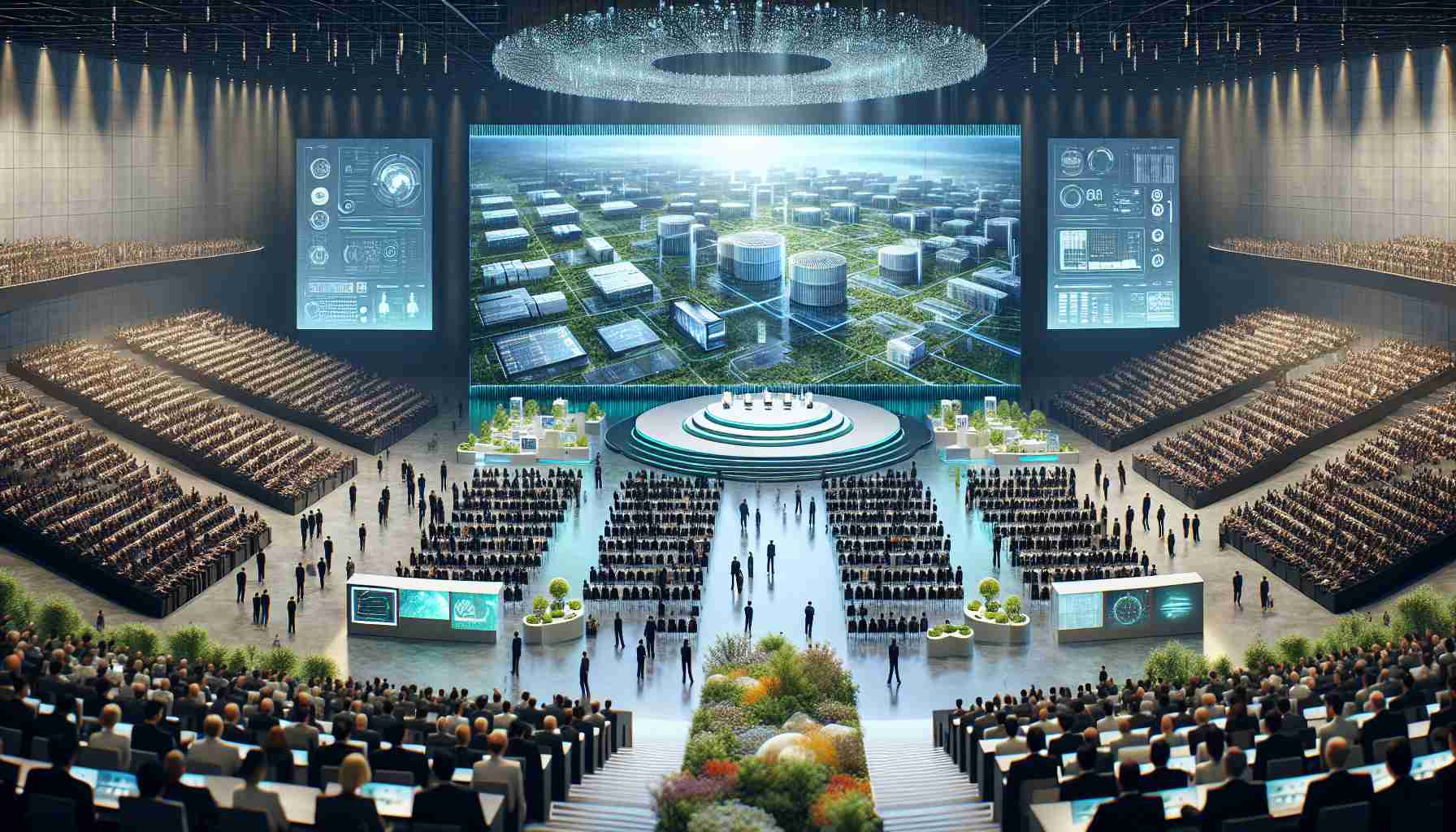The Rise of AI Drives Exponential Growth in Data Centers
During the Global Data Center Facility Summit 2024 in Singapore, industry giants converged to propel the digital future. The summit, focused on “Power the Digital Era Forward,” witnessed over 600 experts and leaders share insights on data center trends. This gathering served as a melting pot for interactive experiences and the exploration of green innovations across the globe.
Huawei’s Pledge to Robust and Sustainable Data Infrastructure
In a remarkable opening address, Huawei’s Senior Vice President, Charles Yang, emphasized the evolutionary leap in data demands spurred by AI technologies like ChatGPT. He highlighted foreseen enhancements, including a substantial boost of 100 GW to global data center capacity within five years. Charles Yang underscored the critical nature of data center reliability and efficiency amidst this growth.
Huawei’s Strategy: Integrated Solutions for Data Center Efficiency
Later, the summit was enlightened by Sun Xiaofeng, Huawei’s President of Data Center Facility and Critical Power Business, who mapped out a blueprint for embracing AI-driven development. He underscored Huawei’s focus on integrated solutions encompassing products, services, and ecosystems aimed to optimize deployment speed, introduce flexible cooling technologies, harness green energy sources, and uphold the reliability of data center operations.
Global Service Reach and Ecosystem Collaborations
Huawei prides itself on a sprawling global service network that ensures continuous technical support. The company also presented its commitment to collaborative growth through solid partner ecosystems, tailored end-to-end data center services, and one-hour service radius for customer support.
ASEAN’s Data Center Future and Huawei’s Innovation Display
Accentuating its global impact, a white paper by Huawei and the ASEAN Centre for Energy scrutinized the ASEAN region’s data center trajectory. At the summit, innovative solutions suited for data centers of various sizes were showcased in tandem with an array of ecosystem partners. Noteworthy was the unveiling of Huawei’s Outdoor PowerPOD, a novel power system container equipped for outdoor use with enhanced reliability and is fast becoming a preferred solution for power supply architecture.
Key Questions:
1. How will growth in AI and technology affect data center infrastructure?
AI and technology advancements are increasing the demand for computing power, storage, and networking capabilities, which will necessitate the expansion and evolution of data center infrastructure to cope with larger volumes of data processing and storage.
2. What strategies are companies like Huawei using to enhance data center efficiency?
Huawei aims to optimize data center efficiency through integrated solutions that include faster deployment speeds, flexible cooling technologies, use of green energy sources, and maintaining high reliability of operations.
3. What are the environmental concerns associated with data center expansion, and how can they be addressed?
The environmental concerns include increased energy consumption and carbon footprint. These can be addressed by employing renewable energy sources, implementing energy-efficient technologies, and designing data centers with lower environmental impact.
4. How do ecosystem collaborations benefit data center operations?
Collaborations help in the innovation, sharing of best practices, and the development of industry standards. They also enable companies to offer comprehensive solutions that can meet the varying needs of different data centers.
Key Challenges or Controversies:
– Energy Consumption: Data centers consume significant amounts of energy, which poses a challenge in terms of sustainability and operational costs.
– Carbon Emissions: The carbon footprint associated with running data centers is a pressing concern, with increasing scrutiny from governments and the public.
– Technology Integration: Rapid technological changes require data centers to continuously update and incorporate new systems, which can be complex and costly.
– Security and Reliability: As data centers become more central to operations, the need for secure and reliable infrastructure becomes more critical, with significant fallout if these are compromised.
Advantages and Disadvantages:
Advantages:
– Innovation: Advancements in AI-driven development and efficient power usage can lead to greater innovation within the industry.
– Efficiency: Integrated solutions may offer improved efficiency in terms of energy usage, operational cost, and overall performance.
– Sustainability: The focus on green innovations is likely to result in more sustainable data centers with reduced environmental impact.
Disadvantages:
– Cost: The transition to greener and more efficient tech can be expensive, leading to higher upfront investment costs for businesses.
– Complexity: Complex integrated systems may require specialized knowledge and skills for installation and maintenance, which could lead to a workforce skills gap.
– Dependence on Vendors: A move towards integrated solutions might increase reliance on specific vendors like Huawei for both hardware and services, potentially limiting flexibility for data center operators.
Suggested Related Links:
– For information on global technology trends: Huawei
– For insights on sustainable energy practices: ASEAN Centre for Energy
Please note that all suggested URLs direct to the main domain and do not include subpages, ensuring their validity as per the instructions.
The source of the article is from the blog papodemusica.com
